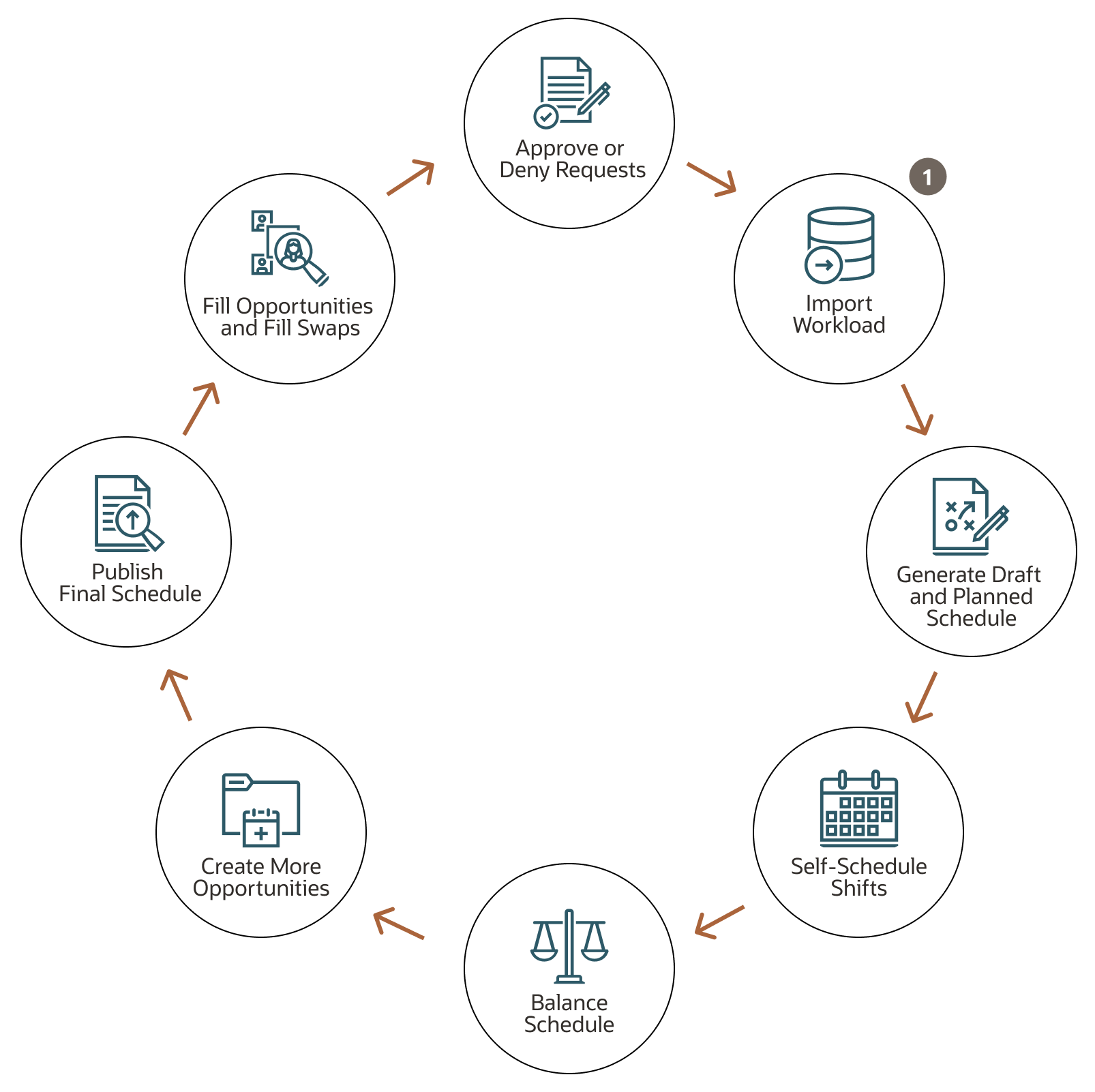Overview of Workforce Scheduling
Schedule the appropriate quantity of qualified workers where you need them.
- Implementation consultants and schedule administrators can create a library of shifts, work pattern types, and work pattern templates. They can also create rules to assign the work pattern templates as work patterns to worker assignments. They create schedule generation profiles that link schedule managers to staffing departments and schedule periods. And they can import workload plans.
- Line managers link worker assignments to departments or locations so that they can be assigned work patterns and schedule managers can generate appropriate workforce schedules. The line managers can also manually add work patterns to worker assignments.
- Schedule managers generate and publish workforce schedules, and manage schedule shifts to optimize worker resources.
- Workers can use their calendars to view their published schedules, claim open shifts, and submit requests to cover, and drop shifts.

Here’s the workforce scheduling cycle:
- Import your workload.
- Generate draft and planned schedules.
- Self-schedule shifts.
- Balance the schedules.
- Create more shift opportunities.
- Publish the final schedules.
- Fill opportunities and shift swaps.
- Approve or deny submitted shift requests, such as cover, drop, and withdraw claim.
